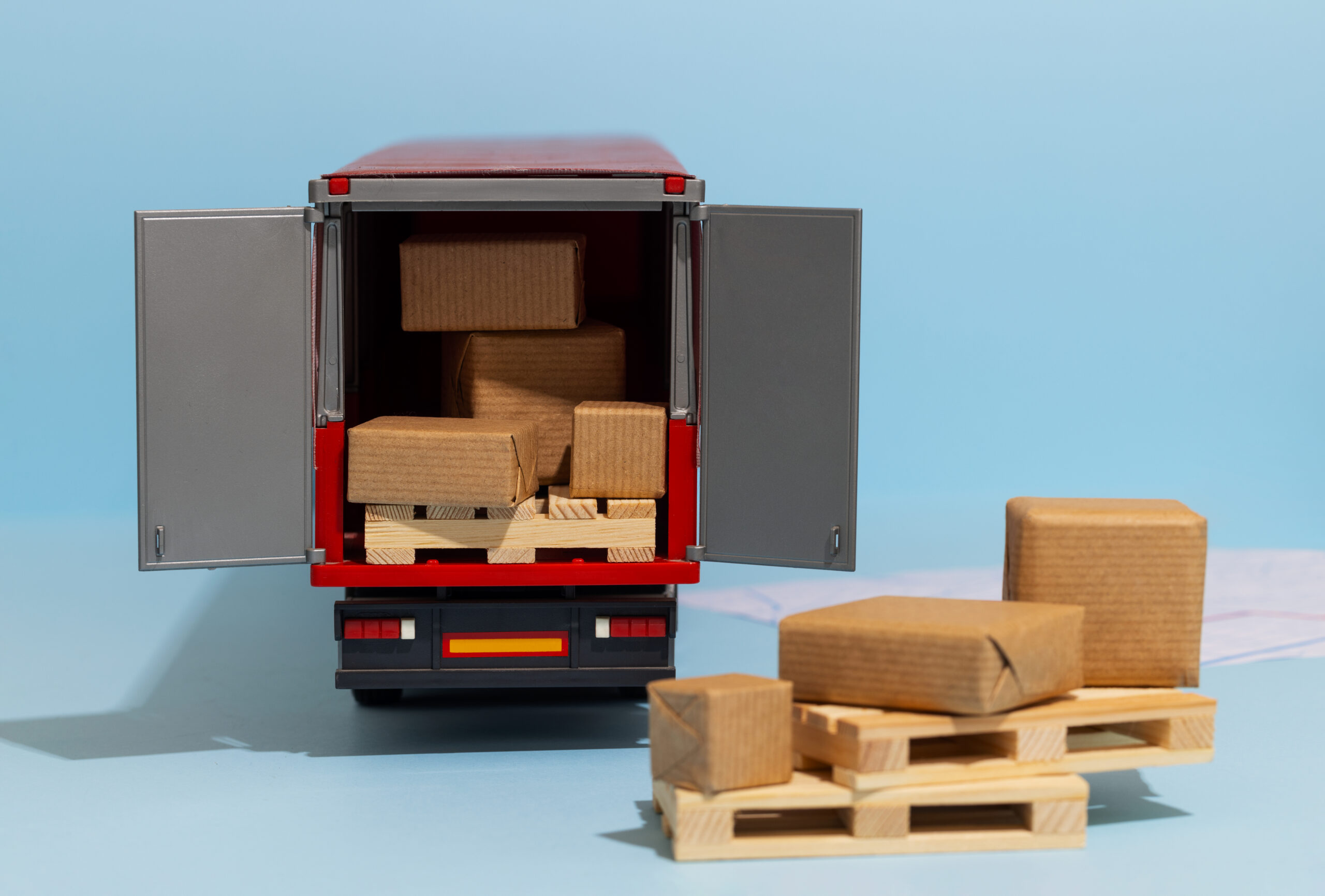High shipping costs can quickly eat into a business’s margins. The market size of carriers accounted for a whopping USD 200.18 billion in 2022. However, often, increased shipping and carrier cost are avoidable. There are several common mistakes businesses make that lead to paying more than necessary for shipping. Avoiding just a few key errors can result in significant savings on annual career spend.
By understanding where businesses frequently go wrong with carrier pricing, you can audit your fulfillment operations. Pinpointing areas for improvement will enable your company to optimize shipping workflows. With more efficient processes, you can keep carrier costs in check without sacrificing fast delivery times.
6 Mistakes Businesses Make Regarding Carrier Cost

The following are the most common mistakes eCommerce businesses make that can lead to increased carrier costs. These may appear as small errors but they can have a big impact on your final invoice amount.
1. Not Having Carrier Diversity
Relying too heavily on a single carrier can lead to inflated shipping costs and logistical headaches. Spreading outbound shipments across multiple carriers provides several key benefits:
-
Cost Savings
With multiple carriers competing for your business, you gain negotiating leverage to secure lower rates. Being locked into a single carrier removes this leverage.
-
Redundancy
If your primary carrier experiences service delays or outages, having a second (or third) option prevents major disruptions. You avoid putting all your eggs in one basket.
-
Flexibility
Different carriers have different strengths, specialties and service areas. Having access to multiple carriers allows you to select the best option for each customer delivery.
-
Faster Delivery Times
Multi-carrier shipping enables you to use whichever carrier can deliver the fastest to a customer’s location. This improves delivery speeds.
-
Expanded Coverage
A single carrier may not cover all the areas you ship to. Using multiple carriers expands your reach into new geographies and markets.
To maximize these benefits, evaluate both national and regional parcel carriers as well as LTL freight options. Look for carriers with strengths complementary to your current provider. Aim for 2-4 total carriers to avoid over-complexity while still diversifying your risk.
2. Errors in Weight & Dimensions
When you enter shipment details into your shipping system or carrier portal, the weight and dimensions you input must be precise. Many businesses estimate these details instead of measuring each package that will be shipped.
This becomes problematic when the carrier weighs and measures your shipment. If the actual dimensions are larger than what was entered, you’ll likely see significant surcharges added to your final invoice. These range from $25-$150 depending on the severity of the error.
Carriers strictly follow dimensional weight guidelines, meaning shipments that take up more space compared to their weight will incur extra fees. Even an inch or two difference can bump items into a higher weight class and pricing tier.
Similarly, an underestimated weight can open you up to large overweight charges, as carriers will bill based on the real weight, not the estimate you provided. These types of errors quickly eat into your margins.
The best practice is to physically weigh and measure each item that will be shipped. This takes more time upfront but prevents nasty surprises when the invoice arrives.
3. No Integration with Shipping Systems
Manually entering orders into multiple shipping systems is a common operational mistake that can lead to increased costs from carrier invoice errors. Copying and pasting data between order management platforms, 3PLs, online marketplaces, and shipping systems is time-consuming and prone to errors.
Up to 25% of shipping costs are from data entry mistakes when orders are manually entered across multiple systems.
The solution is to integrate order management with a Warehouse Management System (WMS). Automating the flow of order information eliminates the need for repetitive manual data entry. Orders are automatically sent to the WMS, which determines the optimal shipping method, prints labels, and sends tracking information back to the order management system.
Benefits of a WMS integration include:
- Reduced data entry errors that lead to incorrect shipments and invoices
- Faster order processing by eliminating duplicate data entry
- Real-time inventory updates across all connected platforms
- Reduced shipping costs by automatically selecting the most cost-effective carrier and service
By leveraging automated integrations between systems, companies can reduce operational costs, improve order accuracy, and streamline fulfillment processes. Using a consolidated WMS can boost productivity in businesses by 25% and space consumption in warehouses by 20%.
4. Not Auditing Invoices
It’s crucial for businesses to routinely audit their shipping invoices to catch any incorrect charges from carriers. Without proper auditing, companies can easily overpay thousands of dollars per year in unseen fees and mistakes.
Auditing invoices involves carefully reviewing all carrier invoices to validate service levels, discounts, fuel charges, accessorial fees, and additional surcharges. Many companies fail to audit invoices closely enough, trusting that carriers have charged them correctly. However, invoice mistakes are more common than many realize.
Some common invoice errors that can cost businesses money include:
- Being charged a higher service level than was requested
- Missing out on negotiated discounts or incentive programs
- Being charged incorrect dimensions or weights
- Paying for extra services or fees that were never requested
- Fuel surcharge math errors
- Duplicate charges
- Basic data entry mistakes
By thoroughly auditing every invoice and identifying discrepancies, companies can get credits from carriers for incorrect charges. This prevents thousands of dollars from being lost through overpayments. The time invested in auditing pays for itself many times over through recovered credits.
5. Inadequate Packaging
Packaging mistakes are a common cause of increased shipping costs and damaged goods claims. Businesses that don’t use proper packaging materials or techniques can incur extra fees and lost revenue in several ways:
I. Using improper packaging materials
Packages must be sturdy enough to withstand the shipment process without tearing, breaking open or collapsing. Weak boxes or insufficient padding leads to crushed packages and damaged products. Shippers may refuse claims and charge fees for improperly packed shipments.
II. Not waterproofing
Products that aren’t waterproofed with plastic or other sealants can get wet and ruined during shipping if packages get exposed to rain or other moisture. Wet cardboard boxes also lose their structural integrity. Water damage often leads to refused claims and higher costs.
III. Improper box sizes
Using oversized boxes leads to excess void fill and wasted space, increasing dimensional weight costs. Undersized boxes stress the package walls and seams and can burst open. Odd-shaped items need to be reinforced and immobilized inside boxes.
IV. Inadequate cushioning
Lack of proper cushioning like packaging peanuts, bubble wrap or air pillows results in product breakage or damage during transit. Shippers will reject claims and may impose fees if items are inadequately protected inside the packages.
V. Poor sealing
Leaving packages unsealed or using inferior sealing tape or adhesives can cause flaps to open and contents to fall out. Lost items lead to claims disputes and extra costs. Reinforced sealing techniques should be used.
6. Not Using Discount Programs
One of the biggest mistakes that increases shipping costs is not taking advantage of available carrier discounts and incentive programs. Many carriers offer discounts like volume pricing and shipper loyalty programs. However, many businesses fail to take advantage of these opportunities to reduce costs.
Some common discount programs offered by carriers include:
1. Volume pricing
As you ship more packages, you unlock better rates. There are tiered pricing models based on monthly or annual shipping volumes.
2. Loyalty programs
Long-term shippers can earn discounts for continued loyalty and higher volumes.
3. Partner programs
Carriers offer discounts when you integrate systems or enroll in special small business programs.
4. Negotiated Carrier cost
Large shippers can negotiate custom rates based on their shipment profile.
5. Incentives
Limited-time discounts or rebates for shipping certain products, using certain services, or shipping more.
Read Also: How to choose the best Shipping Carrier for your eCommerce Business?
How ShipTop Can Help Your Business?
ShipTop is a leading fulfillment company in Canada and the United States that helps online businesses optimize their shipping operations and reduce carrier costs. Here’s how ShipTop can help you avoid the common shipping mistakes outlined above:
1. Carrier Diversity
ShipTop has integrations with all major carriers in Canada including Purolator, Canada Post, UPS, FedEx, and more. We have large volume discounts with these carriers that we pass on to our clients. Our team of shipping experts will analyze your orders and optimize the best carrier mix to reduce costs. We also focus on implementing zero-emission delivery strategies to keep the environment safe and sustainable.
2. Weight & Dimension Errors
Our warehouse uses advanced WMS technology to accurately capture parcel weights and dimensions. This ensures you are charged correctly by carriers and avoids billing errors due to incorrect weights.
3. Shipping System Integrations
We integrate with all major shopping carts and order management systems like Shopify, Amazon, WooCommerce, Magento, and more. This means your orders will flow seamlessly into our warehouse management system avoiding manual errors.
4. Invoice Auditing
Our team rigorously audits all carrier invoices to ensure billing accuracy. We identify and dispute any incorrect charges to get you invoice credits. This ongoing invoice audit process saves our clients thousands in incorrect carrier billings.
5. Packaging
Our warehouse only uses high-quality custom boxes, bubble mailers and packaging materials that are optimized for eCommerce orders. We ensure your products are packed properly to avoid damages and returns. This also leads to favorable dimensional weight pricing from carriers.
6. Discounts
We leverage our large volumes to get the best discounts from carriers that we pass along to clients. This includes volume, loyalty, early payment and other discounts that lead to 5-20% savings on shipping spend.
Read Also: Receiving Guidelines of ShipTop
Wrapping Up
Carrier cost makes up a large percentage of overall logistics costs for businesses. Avoiding common carrier mistakes is crucial for e-commerce companies looking to optimize their bottom line.
Optimizing your career relationships and costs goes a long way toward improving profit margins. A 3PL like ShipTop can help take the guesswork out of carrier management with solutions like automated rate shopping, custom business intelligence reporting, and invoice auditing. By leveraging a 3PL, e-commerce businesses can focus more time on core operations while ensuring shipping costs stay as low as possible.
Contact the experts at ShipTop today to see how we can help you avoid common carrier mistakes and keep more of your hard-earned revenue.




